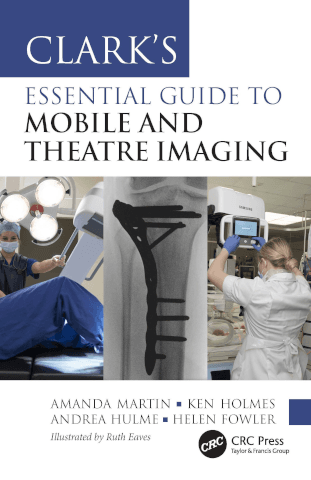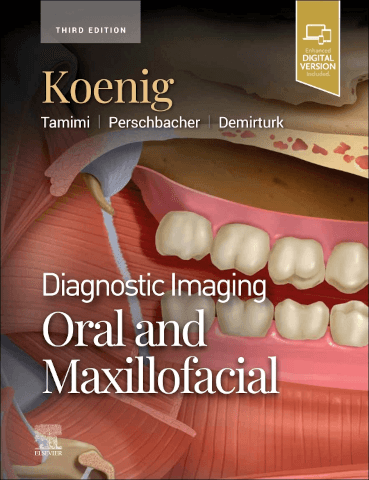
Clark’s Essential Guide to Mobile and Theatre Imaging
Description
This easy-to-understand pocketbook in the highly respected Clark’s stable of diagnostic imaging texts is an invaluable tool for student and practising radiographers, providing practical guidance to undertaking a wide range of mobile and theatre imaging examinations in multiple locations − different theatre environments, the emergency department, intensive care units, including neonatal intensive care units, and on general wards.
Additional information
|
Author(s):
Martin, Holmes, Hulme, Fowler | Martin, Holmes, Hulme, Fowler |
|
ISBN:
978-1-032-14782-6 | 978-1-032-14782-6 |
|
Publisher:
CRC Press, Taylor & Francis | CRC Press, Taylor & Francis |
|
Reviewed by:
Zandra Green, diagnostic radiographer, Chesterfield Royal Hospital NHS Foundation Trust | Zandra Green, diagnostic radiographer, Chesterfield Royal Hospital NHS Foundation Trust |
Publisher price: £28.99
Clark’s Essential Guide to Mobile and Theatre Imaging is a compact guide for students and radiographers working in portable and theatre imaging environments. This practical and well structured reference provides clear, concise and practical instructions for performing imaging procedures outside traditional radiology departments, making it an essential tool for students and professionals alike.
A key strength is the systematic approach to addressing the unique challenges of mobile and theatre imaging. Unlike standard radiographic settings, mobile imaging requires quick decision making, adaptability, and efficient communication within multidisciplinary teams. The guide outlines these challenges and provides practical strategies for overcoming them, ensuring radiographers can work safely and effectively in various clinical environments.
The content is divided into three main sections:
- Key Aspects of Mobile Imaging introduces the fundamentals of mobile radiography, including equipment, radiation protection, dose optimisation and best practices. The emphasis on safety and efficiency ensures that radiographers are well prepared for the complexities of working outside a controlled radiology suite.
- Mobile Radiography covers a range of clinical settings such as hospital wards, emergency departments, ICUs and NICUs. This section provides detailed guidance on positioning and adapting techniques for critically ill or paediatric patients with a strong focus on real-world application.
- Theatre Radiography explores the use of imaging in surgical procedures, emphasising fluoroscopic techniques and the specific requirements of different surgical specialities. It also highlights essential protocols, such as the ‘time out’ safety check, to ensure effective teamwork and patient safety in the operating theatre.
One of the book’s standout features is its emphasis on practical problem solving. Each chapter not only describes imaging techniques but also discusses common obstacles and their solutions. The clear and structured format makes it easy to reference in fast-paced clinical situations. Additionally, the focus on radiation protection and dose management is a valuable aspect, reinforcing the importance of safety for both patients and healthcare workers.
This is an indispensable guide for radiographers seeking to improve their skills and adapt to the dynamic nature of these imaging environments. However, the book could have done with a discussion on emerging technologies such as AI integration in portable imaging or on the newer flat panel mobile C-arms. This would enhance its value, especially among forward-looking professionals. That said, this is its first edition and a welcome and much-needed resource. With future editions, there would be a strong potential to expand on advanced technology integration and practical case-based content to make it an even more indispensable clinical companion.
To purchase this title at our discounted rate email: katherine@radmagazine.com.




